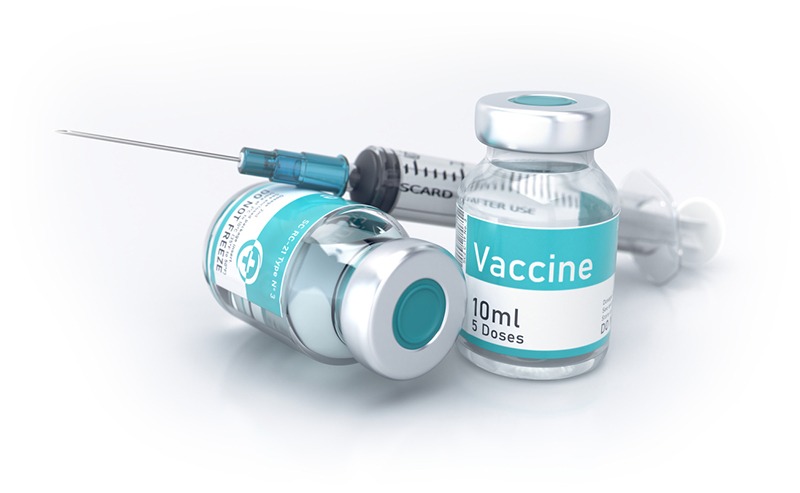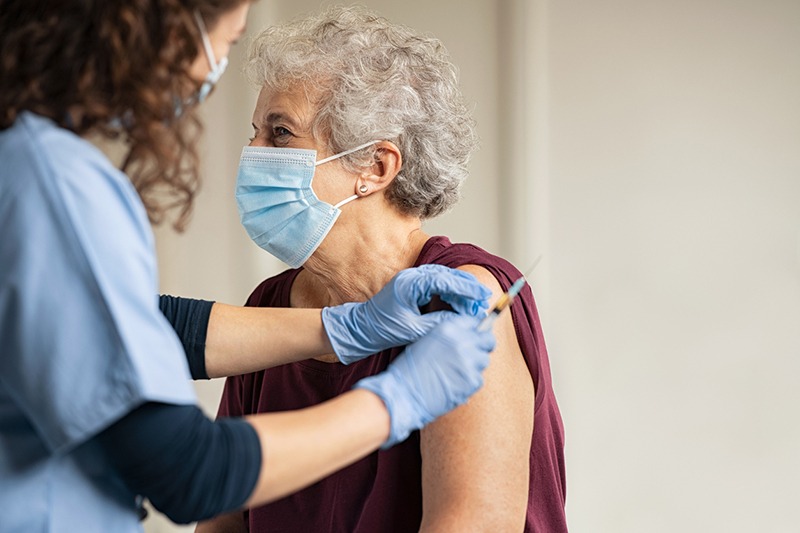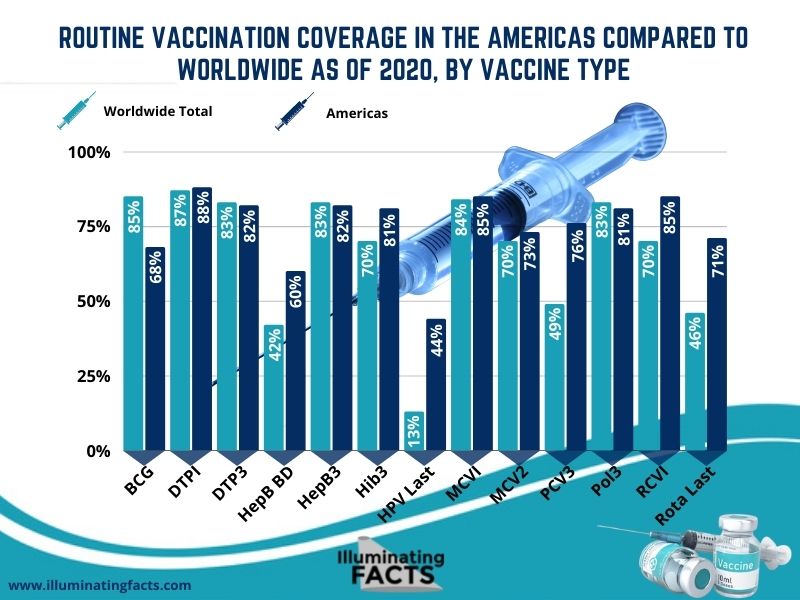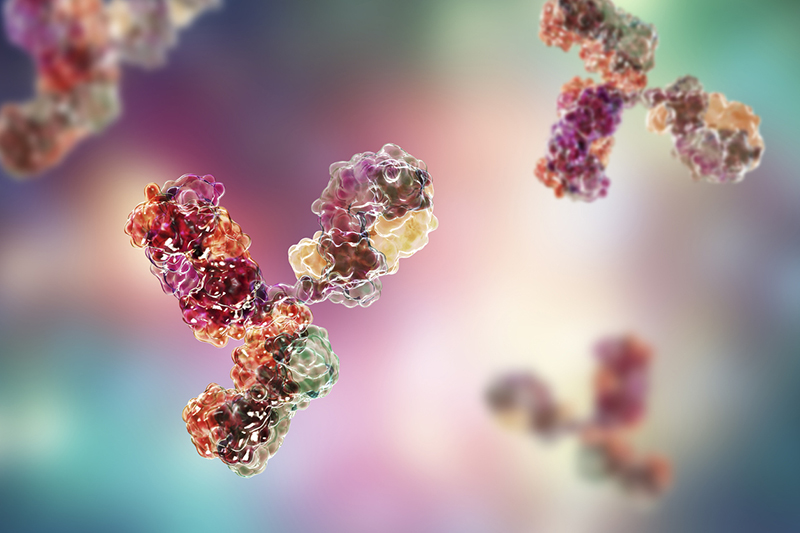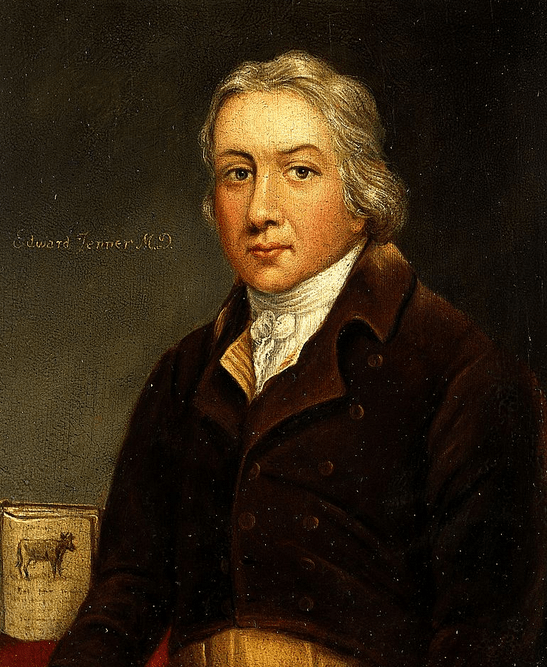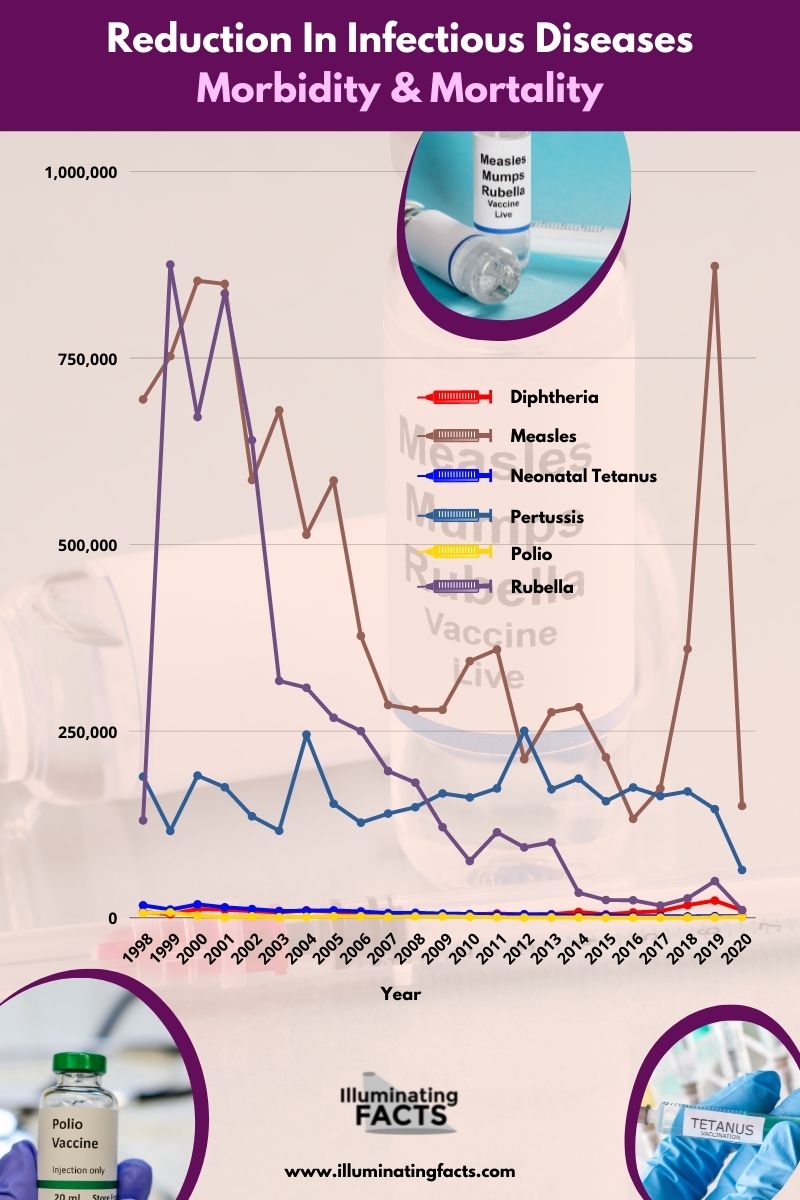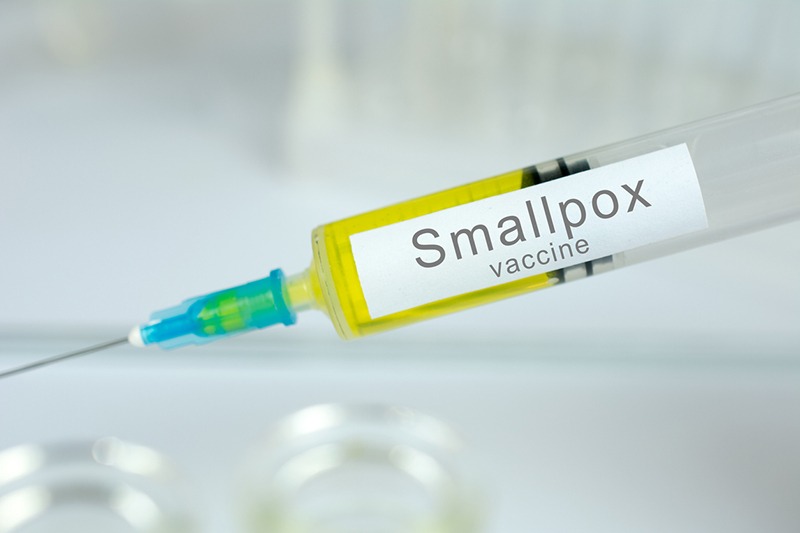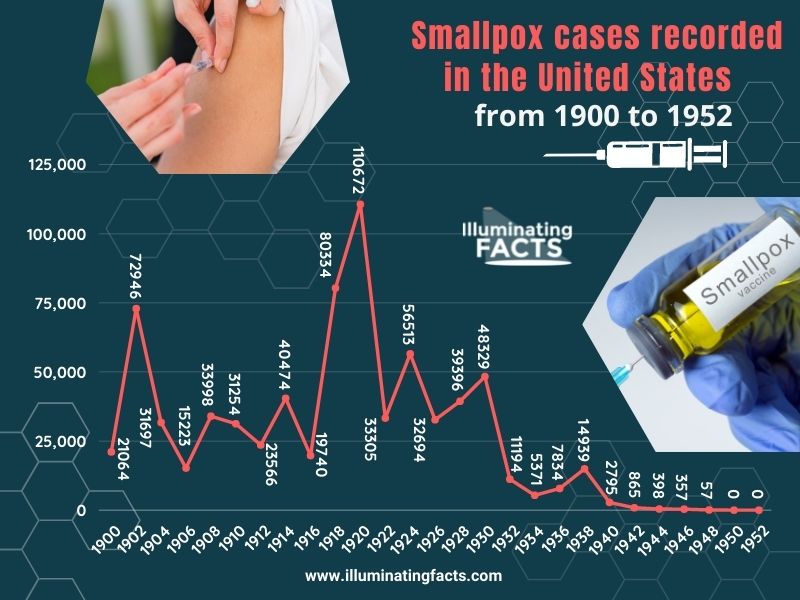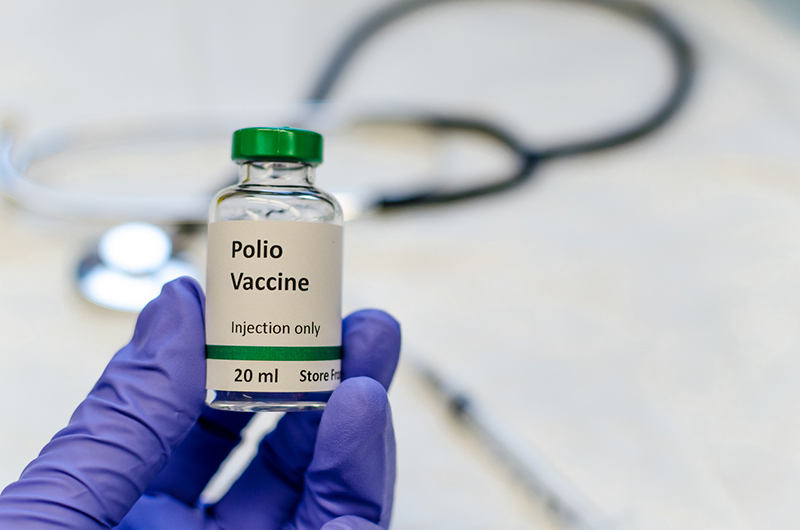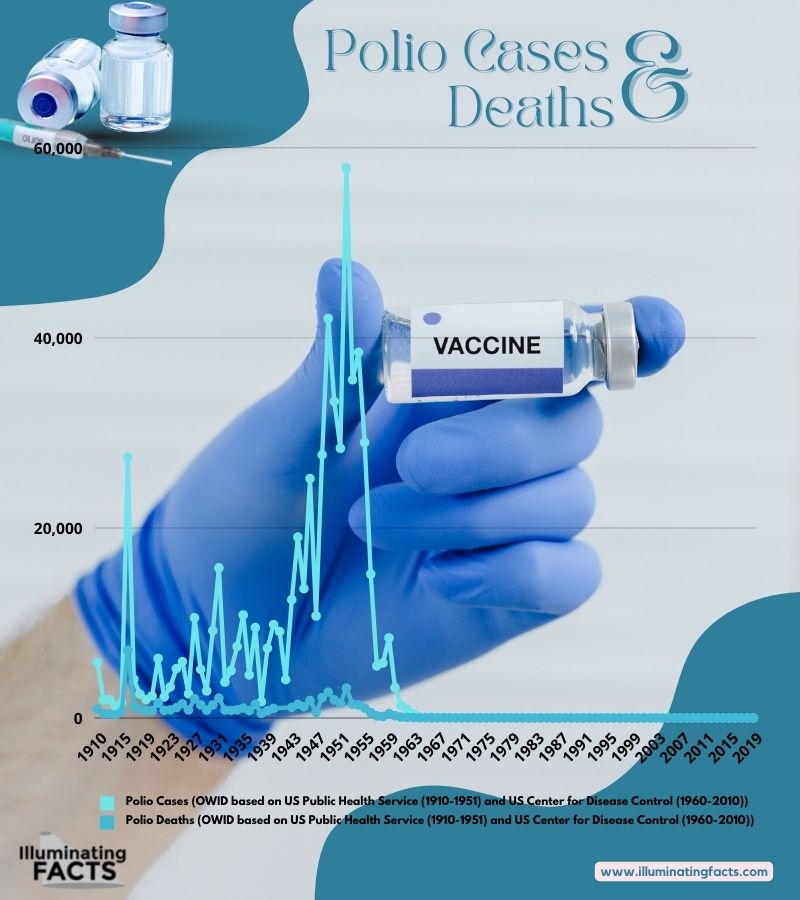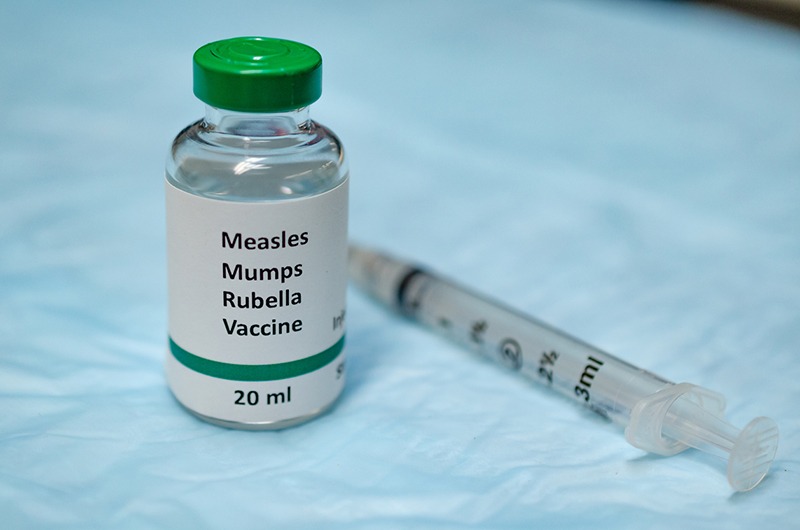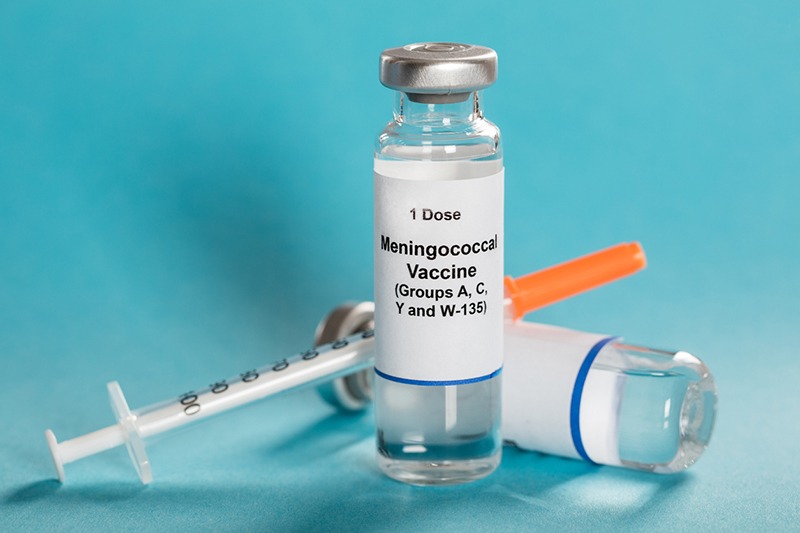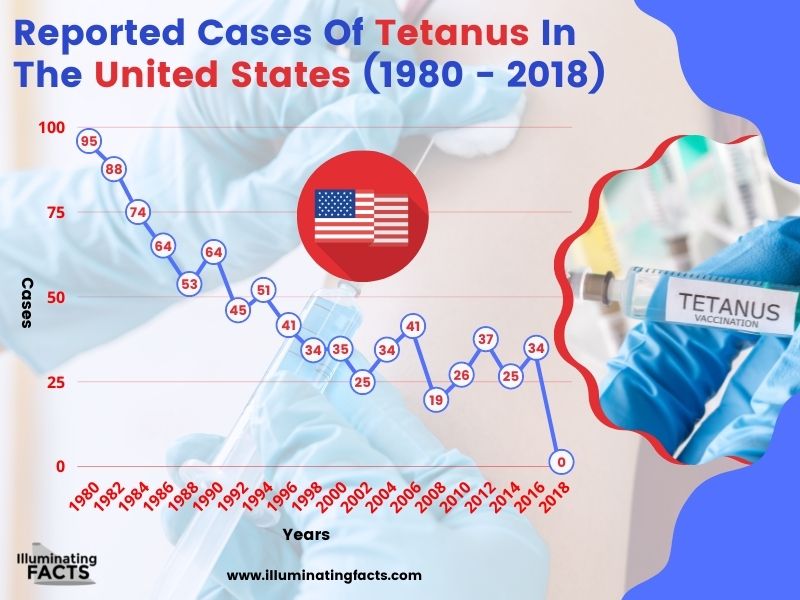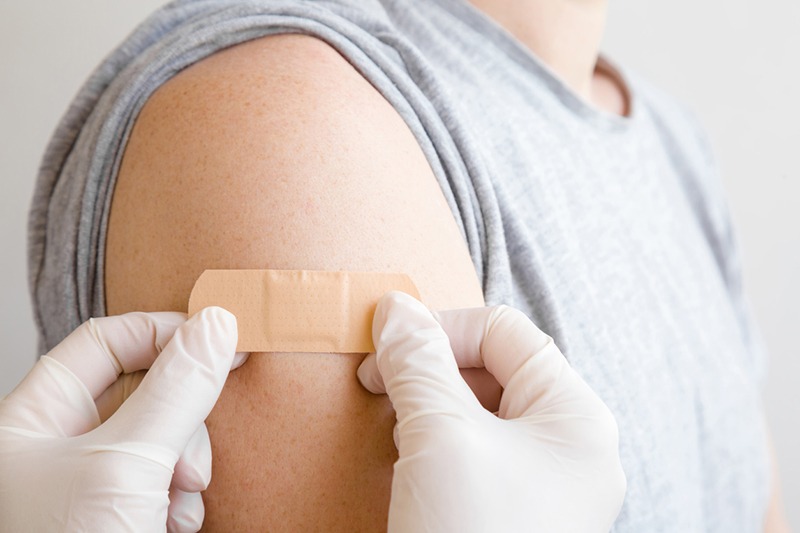Since the advent of vaccines, public health infrastructures have seen a massive turnover worldwide. Immunization today is the cornerstone of public health policy, especially pediatric care. In countries with high vaccine accessibility, many diseases that caused deaths in childhood have disappeared. According to the World Health Organization, the current immunization strategies save 2-3 million lives each year. They have reduced mortality in children below five from 93 deaths in 1990 to 39 deaths in 2018 per 1,000 births.
Yet, vaccines remain misunderstood by many, and the anti-vaccination movement is constantly rising. So, let us understand and crack the excellent vaccine with its immunological impacts.
One can argue that immunology has not contributed much to vaccine development. Today, a better understanding of protective immunity is needed to counter the challenges in targeting some pathogens. Furthermore, with knowledge of immunological challenges, immunologists can produce the next generation of immunogens.
From the science behind vaccines to their historical timeline and socio-economic factors relevant to their performance and prevalence, our review entails everything needed to understand the topic. Let us get started!
What are Vaccines?
Vaccines are biological preparations that confer active acquired immunity against infectious diseases. Vaccines consist of particles that resemble or are from the pathogens to achieve this desired response. Some are extracted from naturally occurring pathogens, while some are produced in a laboratory synthetically. The essential component for most vaccines is the protein antigen. They are responsible for triggering an immune response within the body by stimulating white blood cells for phagocytosis and antibody production.
In general, vaccines induce an immune response by employing agents that resemble the disease-causing microorganism. They might as well be parts of the microbe itself. Suspensions of weakened, killed, or fragmented microorganisms get used. They can also contain toxins, surface proteins, antibodies, or lymphocytes. These foreign body particles induce an immune response in the body. It leads to the formation of antibodies and memory cells. These two later come in handy when the actual microorganism invades your body.
Types of Vaccinations
There are several types of vaccines. Generally, we classify vaccines as either live or non-live. The latter is often referred to as inactivated. It helps distinguish vaccines containing attenuated strains of the relevant replicating pathogenic organism against those that only contain some pathogen components or killed whole organisms (Fig. 1). However, over the past few years, several forms of vaccines have been developed. From viral vectors to RNA and DNA vaccines: there is a lot more vaccine variety in the modern-day world.
The following is a table with data on types of vaccines and an infographic that sums up the information!
Table 1: Tabulated data regarding the types of vaccines with the relevant licensed names used in public vaccination programs. The years of introduction with their diseases.
Type of Vaccine | Licensed Vaccines using it | Year of Introduction |
Live attenuated (weakened or inactivated) | Measles, mumps, rubella, yellow fever, influenza, oral polio, typhoid, Japanese encephalitis, rotavirus, BCG, varicella-zoster | 1798 (Smallpox) |
Killed whole organism | Whole cell pertussis, polio, influenza, Hepatitis A, rabies, Japanese encephalitis | 1896 (Typhoid) |
Toxoid | Diphtheria, Tetanus | 1923 (diphtheria) |
Subunit (Purified protein, recombinant protein, peptide, polysaccharide) | Pertussis, Hepatitis B, influenza, meningococcal, pneumococcal, typhoid, Hepatitis A | 1970 (anthrax) |
Virus Like Particles | Human papillomavirus | 1986 (Hepatitis B) |
Outer membrane vesicle | Group B Meningococcal | 1987 (Group B meningococcal) |
Protein Polysaccharide Conjugate | Haemophilus influenzae type B, Pneumococcal, meningococcal, typhoid | 1987 (H. influenzae type B.) |
Nucleic Acid Vaccine (RNA/ DNA) | SARS-CoV-2 | 2020 (SARS-CoV-2) |
Bacterial Vectored | Experimental | |
Antigen Presenting Cell | Experimental | |
Viral Vectored | Ebola | 2019 (Ebola) |
The Science Behind Vaccines – Features of Vaccine-Induced Protection
Vaccines are biological preparations of components that resemble or weaken antigens. They trigger an immune body response upon injection. The white blood cell receptors bind to them and do not recognize them as a part of your body. They are intruders, and your white blood cells undergo clonal expansion and selection. There is a production of lymphocytes that produce antibodies for the agglutination of antigens. Then, phagocytes for phagocytosis get manufactured. The body also develops memory cells that recognize the relevant invading antigens, conferring immunity when an infection occurs. These preparations are weak enough to cause no severe repercussions. It is that simple!
Immune Memory
When confronted with an infectious agent, a person with a vaccine against that pathogen can mount a more efficient and accurate protective immune response. When the incubation is lengthy enough for a new immune response to establish, immunological memory is adequate for defense against pathogens. For instance, in HBV, which has an incubation period of 6 weeks to 6 months, an immunized person is shielded after immunization, even if exposed to the virus sometime after the vaccine shot. The waning of antibody levels varies on the recipient’s age (which is very quick in babies due to a shortage of bone marrow niches for B cell survival), the nature of the antigen, and the number of booster doses injected.
For instance, the virus-like particles used in the HPV vaccine stimulate immune reactions lasting decades, whereas pertussis vaccines induce a fairly-short immune response. The inactive measles vaccine causes shorter-lived immunity than the live attenuated measles vaccine.
As a result, infectious diseases emerge soon after pathogen acquisition memory response controls these infections. Sustained immunity for protection through immunization may be hard to achieve. One solution is to give booster doses of vaccine throughout childhood (as is done with diphtheria, tetanus, pertussis, and polio vaccines) to keep antibody levels above the defensive threshold.
Vaccines that provide life-long protection do not have booster doses as a regular practice in adult life. For most countries, these childhood doses can achieve high coverage. Infectious diseases have a high prevalence in young children: persisted boosting after two years is not recommended.
1. Herd Immunity
Although most vaccine development has focused on the direct protection of individuals through vaccination, which is imperative for new vaccine licensure, it has become clear that herd immunity is an important additional component of vaccine-induced safety.
Vaccines indirectly protect everyone. Some people cannot receive vaccinations for various reasons.
Fortunately, if a large population is immunized, one can halt the pathogenic transmission. As a result, disease incidence may fall even further than previously thought.
A Brief History of Vaccines
1. The First Vaccination: Discovery, Invention, and Effect
Edward Jenner, a British physician, invented the first vaccine in 1796. It used the cowpox virus (vaccinia) to protect humans from smallpox, a related virus. Previously, Asian physicians used the basic concept of immunization to protect children against smallpox by giving them dried shells from the disease’s lesions. Although some people developed immunity, others became infected with the disease.
Jenner’s contribution provided immunity through the substance related to but more secure than smallpox. He benefited from the uncommon circumstance where one viral infection confers immunity against another. In 1881, a French microbiologist named Louis Pasteur demonstrated anthrax immunization by injecting sheep with a formulation containing attenuated forms of the pathogenic bacillus. Four years later, he developed a rabies-protective suspension.
2. General Peek into History
Vaccination has been here for hundreds of years. In 17th century China, Buddhist monks drank snake venom to gain immunity to snake bites, and variolation existed (smearing a skin tear with cowpox to gain immunity to smallpox). In 1796, Edward Jenner found a vaccine. He is the founder of vaccinology in the West. He inoculated a 13-year-old boy with the vaccinia virus (cowpox) and demonstrated immunity to smallpox. The first smallpox vaccine came in 1798. The systematic implementation of mass smallpox immunization in the 18th and 19th centuries culminated in its global eradication in 1979.
Louis Pasteur’s experiments paved the way for human vaccines against live attenuated cholera and inactivated anthrax (1897 and 1904, respectively). In the late 1800s, a plague vaccine got developed. Bacterial vaccine development exploded between 1890 and 1950, including the Bacillus Calmette-Guerin (BCG) vaccination, which is still in use today.
Alexander Glenny perfected the use of formaldehyde to inactivate tetanus toxin in 1923. In 1926, the same method got employed to develop a diphtheria vaccine. Pertussis vaccine development took much longer, with the first whole-cell vaccine licensed for the United States in 1948.
From 1950 to 1985, viral tissue culture methods advanced, resulting in the development of the Salk (inactivated) polio vaccine and the Sabin (live attenuated oral) polio vaccine. Polio has been eradicated from many parts of the world thanks to widespread immunization.
Over the last twenty years: molecular genetics, immunology, microbiology, and genomics have increased implementations in vaccinology.
Latest accomplishments include the production of recombinant hepatitis B and reactogenic acellular pertussis vaccine. We have discovered new seasonal influenza vaccine production techniques too.
Timeline of Vaccines
| Year | Disease & Vaccination |
| 0910 | Measles and Smallpox Described Separately (Abu Bakr Muhammad Zakariyya Razi described two diseases as unique and distinct from one another) |
| 1000 | Early Chinese Inoculation (Smallpox inoculation practices in China and India are mentioned in volume 6 of Joseph Needham’s Science and Civilization in China) |
| 1545 | Smallpox Epidemic in India (8,000 children died due to smallpox in Goa) |
| 1625 | Early Smallpox in North America (French Jesuits encountering Native Americans in Canada were infected with smallpox) |
| 1633 | Colonial Epidemic (smallpox epidemic hit Massachusetts) |
| 1634 | A Governor’s Viewpoint about people dying from Smallpox |
| 1657 | Measles Appears in Boston |
| 1661 | Royal Support of Inoculation (Chinese Emperor K’ang survived smallpox and supported inoculation) |
| 1676 | Sydenham Documents Measles Infection |
| 1678 | Early Medical Pamphlet on Smallpox (The first medical work in response to the smallpox epidemic in New England was printed in Boston) |
| 1679 | The Indian Plague (Effects of Smallpox on Iroquois) |
| 1693 | A Proclamation in Virginia (A Day of Humiliation and Prayer because of Measles) |
| 1694 | A Royal Death (Queen Mary II of England died due to a lethal form of smallpox, Variola Haemorrhagic) |
| 1706 | African Use of Variolation |
| 1713 | Deadly Toll for Prominent Colonist (Measles killed three of Cotton Mather’s children and his second wife) |
| 1718 | Variolation in Turkey (Lady Mary Wortley Montagu’s son was variolated by Dr. Charles Maitland) |
| 1721 | Boston Smallpox Epidemic (844 deaths, 248 people variolated)
The First English Variolation (Lady Mary Montagu brought the practice of variolation to England) |
| 1730 | Continuing Colonial Epidemics (Smallpox epidemics in Philadelphia, New York, and Boston) |
| 1735 | A Plague Among Children (32% of children under age 10 died of diphtheria) |
| 1736 | Franklin Loses Son (Benjamin, the four-year-old son of Franklin, died of smallpox) |
| 1738 | The Promise of Variolation (Charleston, South Carolina, was struck by a smallpox epidemic. 4% of 441 people variolated died of smallpox) |
| 1740 | Rubella: The German Measles (First clinical description given by Friedrich Hoffmann, a German Physician) |
| 1751 | London Smallpox Deaths (3,538 deaths for the year) |
| 1757 | Infectious Nature of Measles Shown by Francis Home, Scottish Physician. |
| 1759 | Spreading Word of Inoculation (Benjamin Franklin suggested William Heberden, an English Physician write a pamphlet. It was to inoculate the children against smallpox) |
| 1764 | Harvard, Adams, and Smallpox (John Adams underwent variolation during Boston Epidemic) |
| 1767 | Chickenpox: Disease Distinguished from Smallpox (William Heberden gave a detailed description of chickenpox) |
| 1770 | Protection by Cowpox Infection (Edward Jenner, an English Doctor, found that cowpox can cure smallpox) |
| 1774 | A Farmer Takes a Chance (Benjamin Jest, English farmer and cattle breeder, inoculated his two sons and wife against smallpox) |
| 1775 | Smallpox as War Breaks Out (George Washington’s military troops infected Boston with smallpox) |
| 1776 | Smallpox Becomes a Weapon of War (A 10,000 force of Continental Army Soldiers in Quebec was infected with smallpox, resulting in 5,000 patients) |
| 1777 | Mandatory Inoculation for Continental Army (George Washington, commander-in-chief of the Continental Army, ordered the survivors for mandatory inoculation against smallpox) |
| 1781 | Future President Contracts Smallpox (Andrew Jackson contracted smallpox at age of 14 while he was held prisoner during the War of Independence) |
| 1792 | Stricter Regulations Passed for Inoculation (The Commonwealth of Virginia passed an act to regulate smallpox inoculation; otherwise, there was a penalty of $1,500- or 6 months imprisonment) |
| 1800 | Waterhouse Brings Vaccination to the States (Benjamin Waterhouse, a Harvard professor of medicine, performed vaccinations on his children for the first time in the U.S.) |
| 1802 | Vaccination vs. Variolation (Dr. Jean de Carro, a physician, introduced vaccination to India while encouraging vaccination and not forbidding inoculation)
Vaccination Endorsed (Massachusetts was the first U.S. state to encourage vaccination against smallpox) |
| 1803 | Origin of the Term Vaccination (Edward Jenner insisted in the meeting of the Royal Jennerian Society to use the term vaccination from the Latin word Vacca which means cow. It was to credit his friend Richard Dunning, physician)
A Vaccination Expedition (King Charles IV of Spain commissioned Francisco Xavier de Balmis to bring the vaccination of smallpox to the Spanish colonies) |
| 1805 | First Compulsory Vaccination Attempted (Marianne Elisa of Lucca, sister of Napoleon, was the first ruler to make vaccination compulsory) |
| 1806 | U.S. President Stands by Vaccination (Thomas Jefferson, an advocate of vaccination, got a copy of Edward Jenner’s work from Rev. Dr. G. C. Jenner, nephew of Edward Jenner) |
| 1813 | U.S. Vaccine Agency Established (U.S. Congress authorized and James Madison signed An Act To Encourage Vaccination while establishing a National Vaccine Agency) |
| 1855 | Vaccination Law Passes (The first U.S. law passed in Massachusetts made vaccination mandatory for school children) |
| 1861 | Measles Plays A Role In The Civil War (Measles sickened both side’s troops in the American Civil War) |
| 1862 | Smallpox Hospital Loses 110 Patients in 1 Week (250 patients were admitted to Richmond’s smallpox hospital, out of which 110 died in a week)
Smallpox and the Confederacy (Smallpox epidemics broke out in the Confederacy after the Battle of Antietam during the U.S. Civil War) |
| 1863 | Lincoln Contracts Smallpox (President Abraham Lincoln contracted smallpox on the train back to Washington. However, he recovered) |
| 1870 | Animal Vaccine Brought to U.S. (Henry Austin Martin, a Boston physician, brought the animal vaccine to the U.S.) |
| 1876 | Efforts Increase Vaccine Production (The New York Board of Health established a farm for the vaccine in Lakeview, New Jersey) |
| 1882 | Anti-Vaccination Arguments Spread (In the first meeting of the Anti-Vaccination League of America spread, the word that smallpox was spread due to filth and became their popular argument) |
| 1891 | Advances in Vaccine Production (S. Monkton Copeman, an English physician, added glycerine to lymph that acted as a germicide) |
| 1894 | Early Use of Antitoxin in the U.S. (A two-year-old girl was successfully treated with diphtheria antitoxin by two young Cincinnati physicians)
New York City Regulates Antitoxin (A plan devised by The New York City Board of Health to the Health Department to sell potency and purity of diphtheria antitoxins) First U.S. Polio Epidemic (The first documented outbreak of polio in the United States. It occurred in Rutland County, Vermont, with 132 cases of permanent paralysis and 18 deaths) |
| 1896 | Establishment of Typhoid Vaccination (Wilhelm Kolle and Richard Pfeiffer demonstrated the protection against typhoid fever) |
| 1899 | Early Typhoid Vaccines Used by the British Military (British Army used the typhoid vaccine during the Second Boer War. 15,000 soldiers were immunized there they had 11 cases of typhoid fever per 1,000 soldiers) |
| 1901 | Antitoxin Contamination (Thirteen St. Louis children died because of contaminated antitoxin of diphtheria. Investigations showed that a horse was used in antitoxin, and children died because of tetanus) |
| 1905 | U.S. Supreme Court Addresses Vaccination (In the case of Jacobson v. Massachusetts, upheld the mandatory constitutionality of the smallpox vaccination programs was to preserve the health of the public) |
| 1914 | Typhoid Vaccination Becomes Public in the United States (It was moved from the military force to the general public) |
| 1916 | Measles-Specific Antibodies Identified (Ernest Conseil, MD, and Charles Nicolle, MD figured out the specific protective antibodies in the patients with measles)
Measles Continues to Spread in the U.S. (12,000 people died in the United States because of measles, and 75% of them were younger than 5 years old) |
| 1922 | School Vaccination Requirements (Many United States schools now require smallpox vaccination before the students can attend school) |
| 1929 | The Iron Lung (Philip Drinker, Ph.D., and Charles McKhann, MD, introduced an artificial respirator for patients suffering from paralytic polio at Boston Children’s Hospital) |
| 1931 | Hib Linked to Meningitis (Margaret Pittman, Ph.D. an American researcher was able to classify the different types of Haemophilus Influenza. It was found that bacteria and strains caused meningitis) |
| 1935 | Early Polio Vaccine Trials (Maurice Brodie, MD, tested the polio vaccine at New York University on himself, chimpanzees, and finally on children. Around 11,000 individuals were used in the trial) |
| 1949 | U.S. Success with Vaccination (Naturally occurring smallpox was the last case in the United States. It was limited to 8 people in Hidalgo Country, Texas. Later on, the disease appeared throughout the world in the 1970s) |
| 1954 | Massive Polio Vaccine Trial Begins in the U.S. (A fled test of Salk’s polio vaccine was approved by The Vaccine Advisory Committee. Over 1.3 million children participated in the trial) |
| 1955 | Polio Vaccine Results Announced (80 – 90% of polio vaccine was effective against paralytic polio) |
| 1958 | First Measles Vaccine Is Tested (The first version of the lab’s vaccine was tested on 11 children by Sam Katz, MD, an infectious disease specialist. Each vaccinated child developed antibodies of measles) |
| 1963 | Measles Vaccine Licensed (John Enders and his colleagues declared the measles vaccine to protect against the infection. The Edmonston-B strain was licensed, and almost 19 million doses were administered for the next 12 years) |
| 1969 | Rubella Vaccine Licensed (Meruvax, Hilleman’s HPV-77 Rubella Vaccine was licensed) |
| 1985 | First Vaccine Against Hib (The first vaccine against Hib was licensed in the United States) |
| 1989 | Oral Typhoid Vaccine Licensed in the U.S. (Ty21 oral typhoid vaccine was licensed in the U.S.) |
| 1995 | Chickenpox Vaccine Licensed (FDA licensed Varivax. Before vaccination, there were 4 million cases of measles in the United States with 10,000 hospitalized and 100 deaths) |
Vaccine Miracles – Stories of Success
Vaccines have helped save millions of lives ever since their advent. Here are accounts of vaccine miracles that give hope for the future:
1. Smallpox
One of the most feared diseases, smallpox killed up to 30% of its affected. It left its survivors deeply scarred with no discovery of an effective treatment. In 1796, English physician Edward Jenner discovered how to use the cowpox virus to vaccinate people against smallpox. Vaccination programs expanded over the next century. The last case of it in the US dates to 1949. The smallpox immunization program ended in 1971. Globally, the final infection was in Somalia in 1977, and the WHO declared it eradicated globally in 1980.
In the history of the United States, smallpox has played a vital role in guiding the development of the country. When Europeans first came to the United States, they inadvertently introduced smallpox to the continent. As a result, it wiped out 95% of Native Americans.
Reduction of Cases and Deaths in Smallpox in the U.S. After Vaccination |
|
| Cases | |
| Pre-vaccine 250 cases per million per year (1900-49) |
Post-vaccine 0 cases per million per year |
| 100% Reduction | |
| Deaths | |
| Pre-vaccine 2.9 deaths per million per year (1900-49) |
Post-vaccine 0 deaths per million per year |
| 100% Reduction | |
The number of smallpox cases in the United States was around 110,000 between 1900 and 1930. Later on, the cases declined dramatically after the 1930s and there have been zero cases in the United States since 1950.
2. Polio
Mostly, this virus attacks children below three years old, and it can cause severe paralysis and death. Thanks to vaccines, much of it has been eliminated from the world since the 1950s and 1960s. However, cases still exist in several countries, and immunization programs in Asia and Africa continue.
Polio in the U.S.
The graph below shows the absolute annual number of cases and deaths reported in the United States over the past century. In 1916, the poliovirus infected more than 27,000 Americans while killing more than 7,000 people. At the same time, the cause and spread of the polio disease were not yet known. As a result, New Yorkers closed the schools, swimming pools, public theatres, etc. At that time, it was believed that the virus was spread by mosquitoes and cats. Over 72,000 cats were killed, and massive spraying of DDT insecticide was done to prevent the virus [[8]].
During the 1950s, there was a second major epidemic in the United States in which polio rose to 57,000. At this time, it was greatly facilitated by the successful development of the polio vaccine to hinder virus transmission. Since the 1960s, the cases and deaths from polio disease in the United States have fallen to zero. Now it is eradicated from the United States.
Figure 9: Data by Our World in Data [9]
Reduction of Cases and Deaths in Acute Poliomyelitis in the U.S. After Vaccination |
|
| Cases | |
| Pre-vaccine 141 cases per million per year (1941-50) |
Post-vaccine 0 cases per million per year |
| 100% Reduction | |
| Deaths | |
| Pre-vaccine 10 deaths per million per year (1941-50) |
Post-vaccine 0 deaths per million per year |
| 100% Reduction | |
Figure 10: Data by Our World in Data [10]
Reduction of Cases and Deaths in Paralytic Poliomyelitis in the U.S. After Vaccination |
|
| Cases | |
| Pre-vaccine 103 cases per million per year (1951-54) |
Post-vaccine 0 cases per million per year |
| 100% Reduction | |
| Deaths | |
| Pre-vaccine 11.8 deaths per million per year (1951-54) |
Post-vaccine 0 deaths per million per year |
| 100% Reduction | |
Figure 11: Data by Our World in Data [11]
1. Measles
Measles is a respiratory disease characterized by a rash. Measles is rare in America and other countries where vaccination is widespread, which is good because it can lead to pneumonia, encephalitis, or death. Approximately 10 million measles cases are reported yearly, with 197,000 deaths. However, if vaccinations were not available, the World Health Organization estimates that 2.7 million people would die from the disease each year.
Despite a 79% global drop in measles deaths between 2000 and 2015, 400 children still die from measles daily. From 2000 to 2015, with the global increase in routine measles immunization coverage, more than 20.3 million young lives have been saved. But there are some facts that you still don’t know about measles and its vaccine:
- Measles kills over 568 people a day, especially children.
- In 2019, over 207,500 people lost their lives because of measles.
- A person infected with measles can infect around 12 to 18 people.
- The measles vaccine has been available for about 50 years.
From 2000 to 2020, more than 31 million lives have been saved because of the measles vaccine[12].
Reduction of Cases and Deaths in Measles in the U.S. After Vaccination |
|
| Cases | |
| Pre-vaccine 3044 cases per million per year (1953-62) |
Post-vaccine 0.2 cases per million per year |
| 99.99% Reduction | |
| Deaths | |
| Pre-vaccine 2.5 deaths per million per year (1953-62) |
Post-vaccine 0 deaths per million per year |
| 100% Reduction | |
Figure 13: Data by Our World in Data [14]
2. Hib Meningitis
It was once the most common cause of bacterial meningitis in children. However, since the development of vaccines for the disease in the 1990s, it has been nearly eradicated in developed countries. However, the picture isn’t so rosy in the developing world. Every year, Hib infects approximately three million people and kills an estimated 386,000, most of whom are children under five.
In the pre-vaccine era, the combined mean annual incidence of Hib disease among children under the age of 5 years was estimated to be:
- 40 per 100,000 population of Asia
- 41 per 100,000 population of Europe
- 60 per 100,000 population of Latin America
- 88 per 100,000 population of the U.S.[16]
After successful vaccination and prevention measures, the cases of invasive Hib disease have been reduced to 1.70 cases per 100,000 population from 2009 to 2015[17].
Reduction of Cases and Deaths in Hib in the U.S. After Vaccination |
|
| Cases | |
| Pre-vaccine 84 cases per million per year (1980s) |
Post-vaccine 0.17 cases per million per year |
| 99.8% Reduction | |
| Deaths | |
| Pre-vaccine 1.7 deaths per million per year (1980s) |
Post-vaccine 0.02 deaths per million per year |
| 99.8% Reduction | |
Figure 15: Data by Our World in Data [18]
3. Tetanus
Tetanus, also known as lockjaw, is prompted by the bacterium Clostridium tetani spores. When dirt enters a wound, an individual becomes infected. Infants could also become infected at birth due to a non-sterile delivery. Symptoms include stiffness and muscle spasms and can cause coma and death. However, its probability is one in a fifth. However, with increased vaccination rates, the disease’s incidence is decreasing globally.
In 2013, there were about 59,000 deaths from tetanus. It was less than 365,000 in 1990. In the United States, an average of 31 cases of tetanus were reported per year from 2000 to 2007. Most cases of tetanus among Americans are due to inoculations to lapse or immunized individuals[20].
Reduction of Cases and Deaths in Tetanus in the U.S. After Vaccination |
|
| Cases | |
| Pre-vaccine 4 cases per million per year (1947-49) |
Post-vaccine 0.14 cases per million per year |
| 96.6% Reduction | |
| Deaths | |
| Pre-vaccine 3.2 deaths per million per year (1947-49) |
Post-vaccine 0.01 deaths per million per year |
| 99.9% Reduction | |
Figure 18: Data by Our World in Data [22]
Some Vaccine Facts
After a lengthy reading of everything purely science, a bit of light reading on the fun facts about vaccinations can help one learn more. Here are some fun vaccine facts:
- Did you know that? Vaccination is a centuries-old practice. In 1796, 100 years before viruses got discovered, Edward Jenner was the first to vaccinate in the Western world. Jenner used cowpox disease to prepare the immune system for much more lethal smallpox. Smallpox gets eradicated by an improved vaccine in 1979, but it killed over 300 million people worldwide during the twentieth century.
- Before vaccines, people used variolation all around the world against smallpox.
- The first-laboratory-produced vaccine was made for chickens in 1897 by Louis Pasteur.
- The polio outbreak in the 1950s was the most recent virus to cause widespread closures of movie theatres and swimming pools.
- Vaccines with weakened virus suspensions have been phenomenally successful.
- Moderna was founded ten years ago to develop mRNA-based vaccines.
- The World Health Organization estimates that 2.7 million people die from the disease yearly.
- Smallpox came into the United States by Europeans. It wiped out 95% of the Native Americans.
- Since 1950, there have been zero cases of smallpox in the United States.
- In 1895, the first outbreak of polio disease in the United States had 18 deaths and 132 permanent paralyzes.
- In 2003, polio-endemic countries were only four: Pakistan, Nigeria, India, and Afghanistan.
- In 2019, over 207,500 people lost their lives because of measles.
- More than 31 million lives have been saved from 2000 to 2020. All the credit goes to the measles vaccine.
- In 2019, the Middle Atlantic region reported more cases of measles in the United States.
- From 2009 to 2015, Invasive Hib disease has been reduced to 1.70 cases per 100,000 population.
- There were 59,000 deaths from tetanus in 2013.
- From 1980 to 2018, the reported cases of tetanus were reduced to zero.
- The number of deaths caused by tetanus in the United States has not been more than 10 since 1996.
- Around 82 percent of people in the Americas had received the third dose of Hepatitis B vaccination in 2020.
- For the last 20 years, the vaccine for various diseases like diphtheria, measles, neonatal tetanus, pertussis, polio, and rubella, has controlled the number of cases and deaths from such viruses.
References
- Schnyder, J. L. et al. Fractional dose of intradermal compared to intramuscular and subcutaneous vaccination—a systematic review and meta-analysis. Travel. Med. Infect. Dis. 37, 101868 (2020).
- Voysey, M. et al. The influence of maternally derived antibody and infant age at vaccination on infant vaccine responses: an individual participant meta-analysis. JAMA Pediatr. 171, 637–646 (2017).
- Timens, W., Boes, A., Rozeboom-Uiterwijk, T. & Poppema, S. Immaturity of the human splenic marginal zone in infancy. Possible contribution to the deficient infant immune response. J. Immunol. 143, 3200–3206 (1989).
- Peset Llopis, M. J., Harms, G., Hardonk, M. J. & Timens, W. Human immune response to pneumococcal polysaccharides: complement-mediated localization preferentially on CD21-positive splenic marginal zone B cells and follicular dendritic cells. J. Allergy Clin. Immunol. 97, 1015–1024 (1996).
- Claesson, B. A. et al. Protective levels of serum antibodies stimulated in infants by two injections of Haemophilus influenzae type b capsular polysaccharide–tetanus toxoid conjugate. J. Pediatr. 114, 97–100 (1989).
- Pace, D. et al. Immunogenicity of reduced dose priming schedules of serogroup C meningococcal conjugate vaccine followed by booster at 12 months in infants: open label randomised controlled trial. BMJ 350, h1554 (2015).
- Nikolich-Žugich, J. Ageing and life-long maintenance of T-cell subsets in the face of latent persistent infections. Nat. Rev. Immunol. 8, 512–522 (2008).
- Voysey, M., Pollard, A. J., Sadarangani, M. & Fanshawe, T. R. Prevalence and decay of maternal pneumococcal and meningococcal antibodies: a meta-analysis of type-specific decay rates. Vaccine 35, 5850–5857 (2017).
- Pinto, M. V., Bihari, S. & Snape, M. D. Immunisation of the immunocompromised child. J. Infect. 72 (Suppl), S13–S22 (2016).
- Seligman, S. J. Risk groups for yellow fever vaccine-associated viscerotropic disease (YEL-AVD). Vaccine 32, 5769–5775 (2014).
- Gellin, B. G., Maibach, E. W. & Marcuse, E. K. Do parents understand immunizations? A national telephone survey. Pediatrics 106, 1097–1102 (2000).
- Offit, P. A. et al. Addressing parents’ concerns: do multiple vaccines overwhelm or weaken the infant’s immune system? Pediatrics 109, 124–129 (2002).
- Centers for Disease Control and Prevention. Multiple vaccinations at once. CDC https://www.cdc.gov/vaccinesafety/concerns/multiple-vaccines-immunity.html (2020).
- Aaby, P. et al. Non-specific beneficial effect of measles immunisation: analysis of mortality studies from developing countries. BMJ 311, 481–485 (1995).
- Glanz, J. M. et al. Association between estimated cumulative vaccine antigen exposure through the first 23 months of life and non-vaccine-targeted infections from 24 through 47 months of age. JAMA 319, 906–913 (2018).
- Nohynek, H. et al. AS03 adjuvanted AH1N1 vaccine associated with an abrupt increase in the incidence of childhood narcolepsy in Finland. PLoS ONE 7, e33536 (2012).
- Miller, E. et al. Risk of narcolepsy in children and young people receiving AS03 adjuvanted pandemic A/H1N1 2009 influenza vaccine: retrospective analysis. BMJ 346, f794 (2013).
- Peck, M. et al. Global routine vaccination coverage, 2018. MMWR Morb. Mortal. Wkly. Rep. 68, 937–942 (2019).
- World Health Organization. Immunization coverage. WHO https://www.who.int/news-room/fact-sheets/detail/immunization-coverage (2020).
- World Health Organization. More than 9.4 million children vaccinated against typhoid fever in Sindh. WHO http://www.emro.who.int/pak/pakistan-news/more-than-94-children-vaccinated-with-typhoid-conjugate-vaccine-in-sindh.html (2019).
- World Health Organization. More than 140,000 die from measles as cases surge worldwide. WHO https://www.who.int/news-room/detail/05-12-2019-more-than-140-000-die-from-measles-as-cases-surge-worldwide (2019).
- World Health Organization. Disease outbreaks. WHO https://www.who.int/emergencies/diseases/en/ (2020).
- Rerks-Ngarm, S. et al. Vaccination with ALVAC and AIDSVAX to prevent HIV-1 infection in Thailand. N. Engl. J. Med. 361, 2209–2220 (2009).
- Rerks-Ngarm, S. et al. Vaccination with ALVAC and AIDSVAX to prevent HIV-1 infection in Thailand. N. Engl. J. Med. 361, 2209–2220 (2009).
- Fauci, A. S., Marovich, M. A., Dieffenbach, C. W., Hunter, E. & Buchbinder, S. P. Immunology. Immune activation with HIV vaccines. Science 344, 49–51 (2014).
- Agnandji, S. T. et al. A phase 3 trial of RTS,S/AS01 malaria vaccine in African infants. N. Engl. J. Med. 367, 2284–2295 (2012).
- Killeen, G. F. et al. Developing an expanded vector control toolbox for malaria elimination. BMJ Glob. Health 2, e000211 (2017).
- Rauch, S., Jasny, E., Schmidt, K. E. & Petsch, B. New vaccine technologies to combat outbreak situations. Front. Immunol. 9, 1963 (2018).
- World Health Organization. Mumps reported cases and incidence. WHO Retrieved 04 November 20221. https://immunizationdata.who.int/pages/incidence/MUMPS.html?CODE=USA&YEAR=.
- World Health Organization. Rubella reported cases and incidence. WHO Retrieved 04 November 20221. https://immunizationdata.who.int/pages/incidence/RUBELLA.html?CODE=USA&YEAR=
- World Health Organization. Measles reported cases and incidence. WHO Retrieved 04 November 20221. https://immunizationdata.who.int/pages/incidence/MEASLES.html?CODE=USA&YEAR=
- World Health Organization. Yellow Fever reported cases and incidence. WHO Retrieved 04 November 20221. https://immunizationdata.who.int/pages/incidence/YFEVER.html?CODE=USA&YEAR=
[1] Vaccine coverage Americas vs global 2020 | Statista. (2021). Retrieved 23 November 2021, from https://www.statista.com/statistics/1063711/americas-vaccine-coverage-vs-global-by-vaccine-type/
[2] Timeline | History of Vaccines. Retrieved 1 December 2021, from https://www.historyofvaccines.org/timeline#EVT_8
[3] Vanderslott, S., Dadonaite, B., & Roser, M. (2019). Vaccination. Retrieved 1 December 2021, from https://ourworldindata.org/vaccination#diseases-preventable-through-vaccination
[4] Rodrigues, C., & Plotkin, S. (2020). Impact of Vaccines; Health, Economic and Social Perspectives. Frontiers In Microbiology, 11. doi: 10.3389/fmicb.2020.01526
[5] Roser, M. (2015). Reduction of Cases and Deaths of Vaccine-Preventable Diseases in the US. Retrieved 1 December 2021, from https://ourworldindata.org/reduction-of-cases-and-deaths-of-vaccine-preventable-diseases-in-the-us
[6] Smallpox cases in the United States 1900-1952 | Statista. (2020). Retrieved 23 November 2021, from https://www.statista.com/statistics/1102664/smallpox-cases-in-the-united-states/
[7] Rotary and the Fight Against Polio. Retrieved 23 November 2021, from https://www.endpolio.org/rotary-and-the-fight-against-polio?gclid=CjwKCAiAv_KMBhAzEiwAs-rX1Ld1i7d_PqrtOuNzZJeS0QF1Ss6SKskd7sNMiLtlKOk793rYXzo37xoCR2YQAvD_BwE
[8] Merelli, A. (2016). 100 years ago, New York City declared war against polio and killed 72,000 cats (and 8,000 dogs). Retrieved 9 December 2021, from https://qz.com/787385/the-history-of-polio-in-new-york-includes-unnecessarily-killing-72000-cats-and-8000-dogs/
[9] Ochmann, S., & Roser, M. (2017). Polio. Retrieved 1 December 2021, from https://ourworldindata.org/polio?country=
[10] Roser, M. (2015). Reduction of Cases and Deaths of Vaccine-Preventable Diseases in the US. Retrieved 1 December 2021, from https://ourworldindata.org/reduction-of-cases-and-deaths-of-vaccine-preventable-diseases-in-the-us
[11] Roser, M. (2015). Reduction of Cases and Deaths of Vaccine-Preventable Diseases in the US. Retrieved 1 December 2021, from https://ourworldindata.org/reduction-of-cases-and-deaths-of-vaccine-preventable-diseases-in-the-us
[12] Fast Facts on Global Measles, Rubella, and Congenital Rubella Syndrome. (2021). Retrieved 23 November 2021, from https://www.cdc.gov/globalhealth/measles/data/fast-facts-global-measles-rubella.html
[13] Measles cases U.S. by region 2019 | Statista. (2021). Retrieved 23 November 2021, from https://www.statista.com/statistics/1122586/measles-cases-number-us-by-region/
[14] Roser, M. (2015). Reduction of Cases and Deaths of Vaccine-Preventable Diseases in the US. Retrieved 1 December 2021, from https://ourworldindata.org/reduction-of-cases-and-deaths-of-vaccine-preventable-diseases-in-the-us
[16] Factsheet about Invasive Haemophilus influenzae disease. Retrieved 23 November 2021, from https://www.ecdc.europa.eu/en/invasive-haemophilus-influenzae-disease/facts
[17] Soeters, H., Blain, A., Pondo, T., Doman, B., Farley, M., & Harrison, L. et al. (2018). Current Epidemiology and Trends in Invasive Haemophilus influenzae Disease—United States, 2009–2015. Clinical Infectious Diseases, 67(6), 881-889. doi: 10.1093/cid/ciy187
[18] Roser, M. (2015). Reduction of Cases and Deaths of Vaccine-Preventable Diseases in the US. Retrieved 1 December 2021, from https://ourworldindata.org/reduction-of-cases-and-deaths-of-vaccine-preventable-diseases-in-the-us
[20] Global, regional, and national age–sex specific all-cause and cause-specific mortality for 240 causes of death, 1990–2013: a systematic analysis for the Global Burden of Disease Study 2013. (2014). The Lancet, 102(2609), 306-309. doi: 10.1016/s0140-6736(02)65615-6
[21] Tetanus number of cases U.S. 1980-2019 | Statista. (2020). Retrieved 23 November 2021, from https://www.statista.com/statistics/1122819/tetanus-cases-us-by-year/
[22] Roser, M. (2015). Reduction of Cases and Deaths of Vaccine-Preventable Diseases in the US. Retrieved 1 December 2021, from https://ourworldindata.org/reduction-of-cases-and-deaths-of-vaccine-preventable-diseases-in-the-us


